- Joined
- 13 May 2006
- Messages
- 1,039
- Reaction score
- 949
Bill S said:Another aspect of the program that dd not get much attention in the earlier posts is the pitch for a Universal Hypersonic Test Vehicle UHTV and the Advanced Unmanned Interceptor variants of that concept.
Attached is a concept art slide of the UHTV, drawings of AUI-1, AUI-2 and some Time To Intercept information for even more advanced versions of the concept that I do not have drawings of AUI-3, AUI-3P/J or AUI-4P.
bill
XP67_Moonbat said:Reminds me of the GIUK Interceptor.
XP67_Moonbat said:Remind me if this was posted before. I couldn't find it earlier in the thread
starviking said:XP67_Moonbat said:Remind me if this was posted before. I couldn't find it earlier in the thread
New to me, looks great!
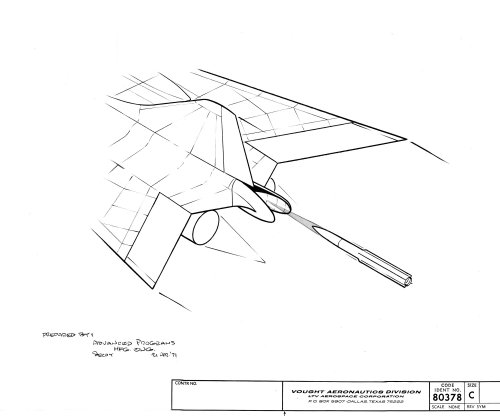
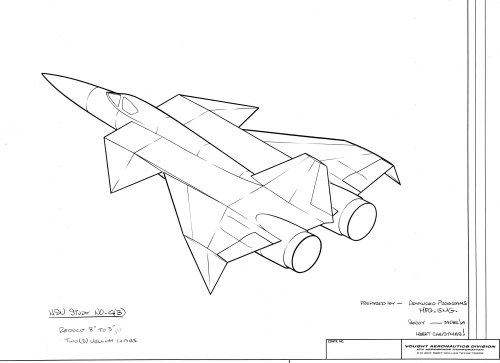
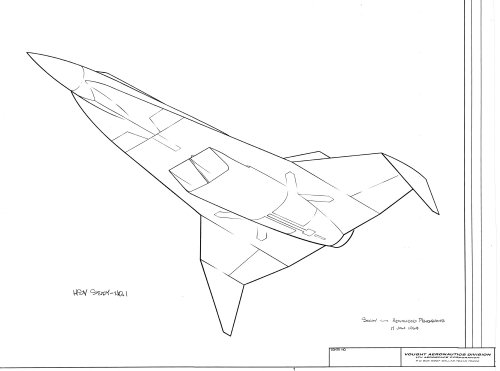
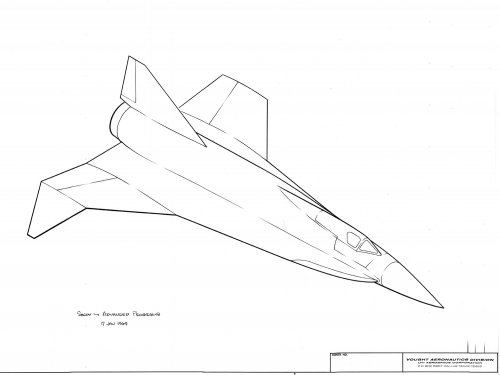
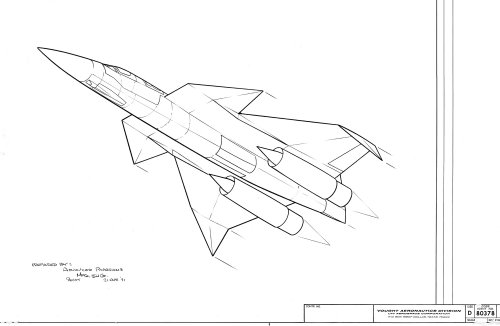
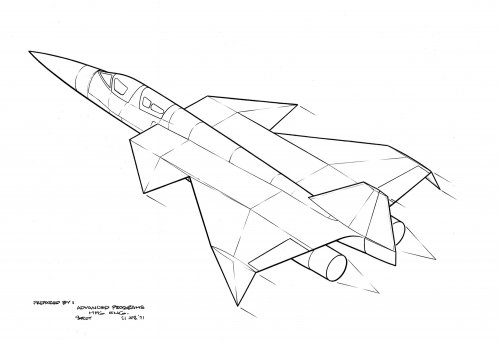
XP67_Moonbat said:Remind me if this was posted before. I couldn't find it earlier in the thread
TomS said:Yep, definite Vigilante vibe with the rearward missile deployment. But that has to be about the worst aeroacoustic environment imaginable for a missile to fly through. Sure feels like the work of a team with a lot of spare time on their hands.
Mark Nankivil said:Good Day All -
From Vought material I had the opportunity to scan, the testbed, or one very similar to, AUI-1 in Bill's scan of an overhead in Reply #117. It appears that take off/landing are done inverted and high speed flight with the ramjet located on the "upper" surface. Quite smart...
Enjoy the Day! Mark
LTV Mach 3 aircraft....? Can you elaborate on it? Am unable to find anything on it. Thanks., KevinThis is a model of a LTV Mach 3 project with turbo-ramjet, exhibited at Le Bourget 1971, from Aviation Magazine 565.
I've searched for an appropriate thread to post this but I didn't find one.
Adrien
Very nice!
LTV did a variety of high speed (Mach 3) studies in the late 60s and early 70s under the HSV (High Speed Vehicle), AI (Advanced Interceptor), ADLI (Advanced Deck Launched Interceptor) and SAMI (Strategic Advanced Manned Interceptor) programs.LTV Mach 3 aircraft....? Can you elaborate on it? Am unable to find anything on it. Thanks., KevinThis is a model of a LTV Mach 3 project with turbo-ramjet, exhibited at Le Bourget 1971, from Aviation Magazine 565.
I've searched for an appropriate thread to post this but I didn't find one.
Adrien
They came from the article/pdf put out by the Air Force Materiel Command History Office earlier this year.Cool model - where are the pics from and what makes you think its "Advanced Interceptor"
"Several contractors submitted proposals under the Advanced Interceptor study from the U.S.
Air Force in the late 1960’s. This design proposed using scramjet engines as well as an internal payload bay
on the upper fuselage.
Indeed.
There is a strange (cut & paste?) effect/artefact going on in the first pic around the bay, not sure what that's about.
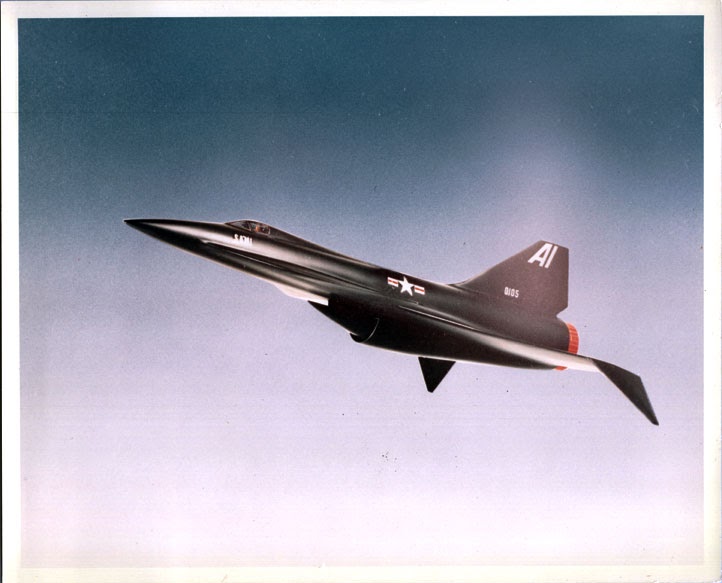
Advanced Interceptor
Vought Aeronautics Division heard of interest in hypersonic interceptor aircraft in March 1968. The team went to work on an Advanced Interceptor (AI) study. Driven by Required Operational Capability (ROC) for Advanced Manned Interceptor, (LAO-3119 10 July 1968) from the USAF and a composite cycle engine evaluation study (Request for Proposal No. F33625-69-12-1453, Exhibit “A”. Statement of Work 4 October 1968) the team went to work.
VAD had already proposed a Universal Hypersonic Test Vehicle (UHTV) program earlier in the year. With a further definition of the mission for the AMI the team was able to apply their previous work on the UVHT to the new requirements.
Two of the goals for the project were to formulate aerodynamic design concepts and evaluation of candidate propulsion cycles. Five mission profiles were studies which created 13 different airplane configurations that filtered down to three refined base line configurations.
VAD viewed the mission definition of the AI as tenuous at best. The reason for that view were the different projected requirements of the USAF and SUN in purpose and complexity.
ZAP
The first mission was described as the ZAP. It consisted of the following:
ZORCH, SNAKE, ZIP and ESCORT were the names of the other operational mission profiles. Most notable differences were in the ZORCH and SNAKE that required a 1500 NM outbound leg.
- 1. Outbound leg of acceleration to Mach 4.5 while climbing to cruise altitude and cruise out to a range of 500 NM.
- 2. A 3g, power-off decelerating turn to Mach 3.0 at 80,000 ft.
- 3. Followed by a constant altitude, constant Mach number turn at thrust limited normal load factor not to exceed 3g
- 4. Engagement segment of 250 NM to inspect and attack the intercepted target.
- 5. Finally, a cruise and descent to sea level with a twenty minute loiter capability at Mach 0.3.
Armament
The mission profiles assumed six missiles with no specifics on missile type current or projected. For the purposes of the project six missiles totaling 2000lbs and 1000lbs for a 30 mm internal gun and ammunition filled the bill. There was one missile from a McDonnell study called the “Raytheon 400”. The missile featured a compact arrangement which made it a good candidate for internal stowage.
The ZORCH and SNAKE profiles necessitated a larger aircraft due to the range; radar needs and second crew member to operate the radar. Designs included external conformal phased radar antennas but also permitted an interplanar array of 36 in diameter.
Crew Accommodations
There was a requirement for forward visibility equivalent to current fighters, which was a challenge with the heating challenges and high angles of attack for landing which led to tilting nose arrangements. The crew also had to be provided and escape capsule due to the high speeds. A closed-circuit video display was later proposed to eliminate the complexity of the tilting nose.
Engine Types
They engine types evaluated were fascinating in name as well as function: Supercharged Ejector Ramjet (SERJ), Plenum Burning Turbofan, Turbojet, Turboramjet, Rocket Augmented Turboramjet, Airturborocket, Turbofanramjet, Supersonic Inflow Turbofanramjet, Turboramjet-Stoichiometric Core, Afterburning Turbojet and finally Combination, Rocket, Ramjet, Turbofan,
Recommendations
In the end the VAD team developed two base line aircraft designs the A-105 and the A-505. The recommendation also included a design maximum speed of Mach 4.5 due to the constraints of fuel selection and construction materials available at the time. For an engine they stated that the Supercharged Ejector Ramjet (SERJ) and the Turbofanramjet (TFRJ) were the most promising.
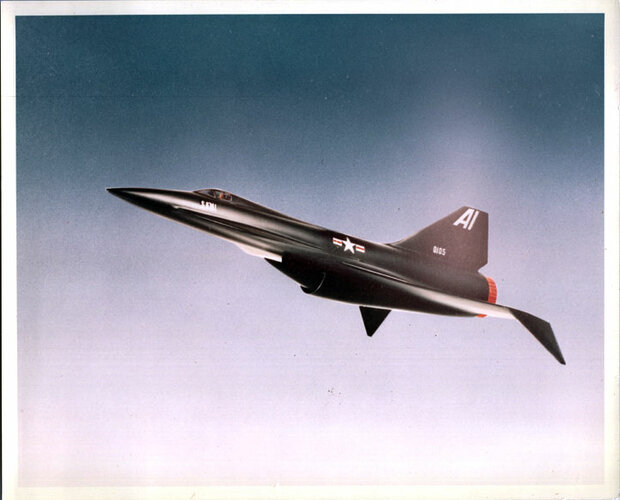
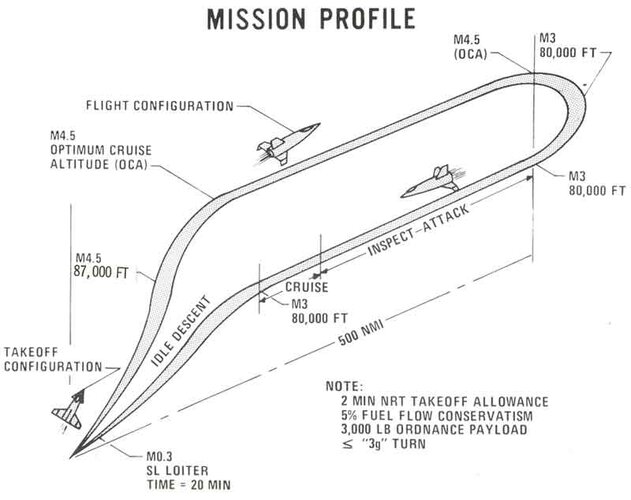
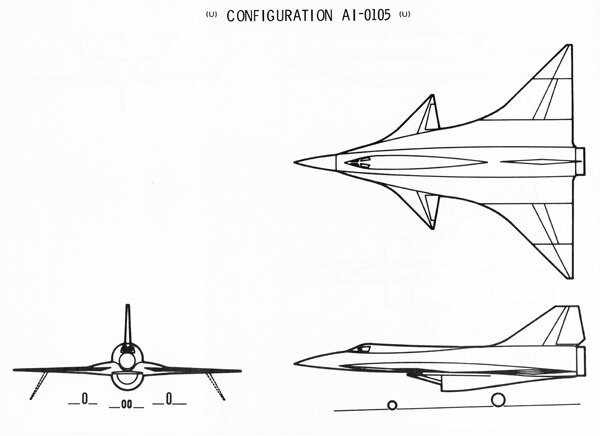
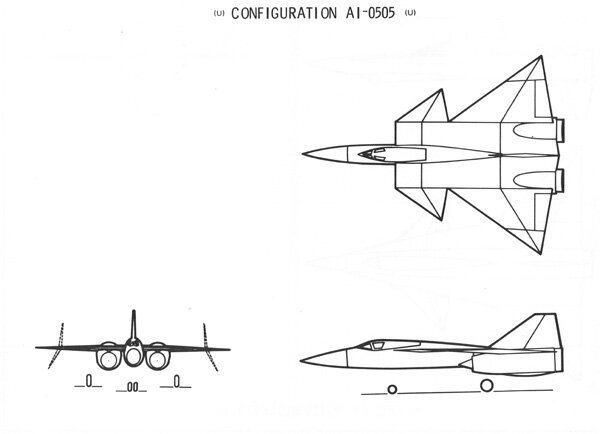
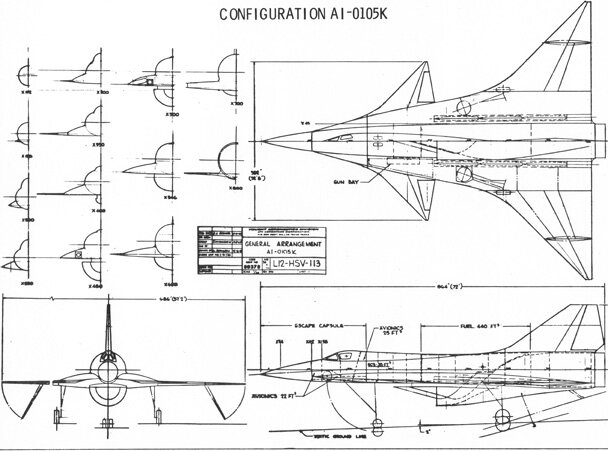
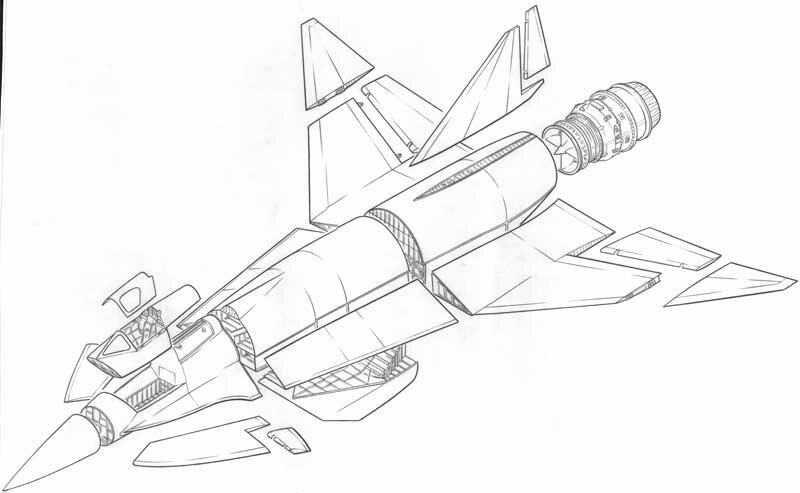
The second long range interceptor NORAD wanted was called the Advanced Manned Interceptor (AMI). The requirement was stated for vigorous
R&D to provide an AMI against the future manned bomber threat. The characteristics of the AMI were (1) ability to operate with a lesser degree
of close control, (2) a sophisticated fire control system (infrared capability out to 800 nm and radar of 500 om), (3) employ a 500 nm weapon (effective from ground up to 200 nm), (4) operate at a sustained speed of Mach 3, 4.5 dash at altitudes of 90,000 to 100,000 feet. NADOP 64-73 recornmended16 squadrons (UE of 18 aircraft) -- 13 squadrons for the U.S. and 3 for Canada -- during the latter period of the plan.
Looks to be a model of the LTV A-105 model - can faintly see the AI on the vertical fin...From Aviation Magazine 1971.
AgreedLooks to be a model of the LTV A-105 model - can faintly see the AI on the vertical fin...From Aviation Magazine 1971.
Thanks - Mark
Could this study and model talked about in the PDF be related to LRAPIS or Long Range Advanced Piloted Interceptor System?"Advanced Interceptor"but quite possibly not Vought(edit: it's Lockheed) - not sure where else to put them:
View attachment 666632View attachment 666634
